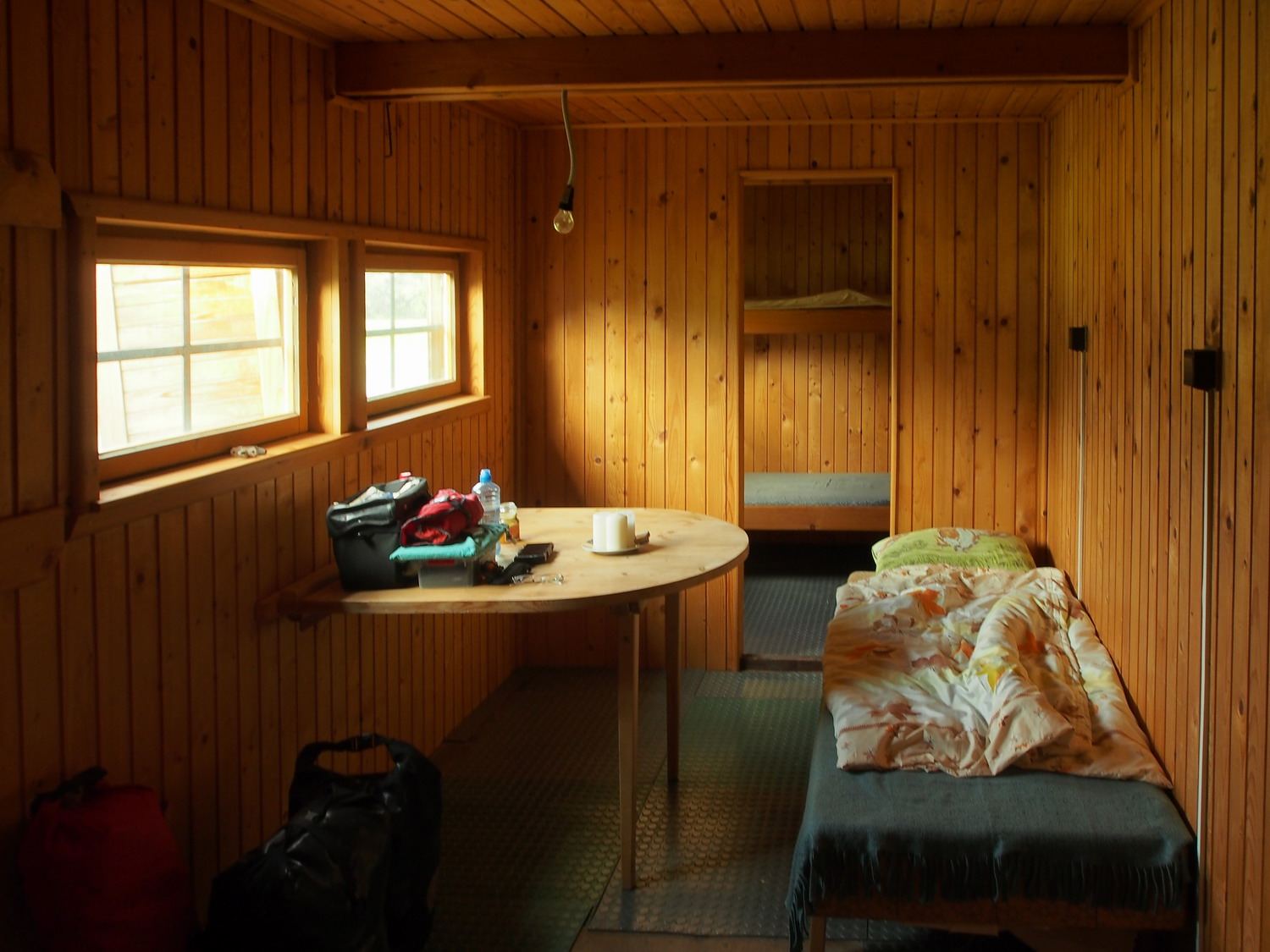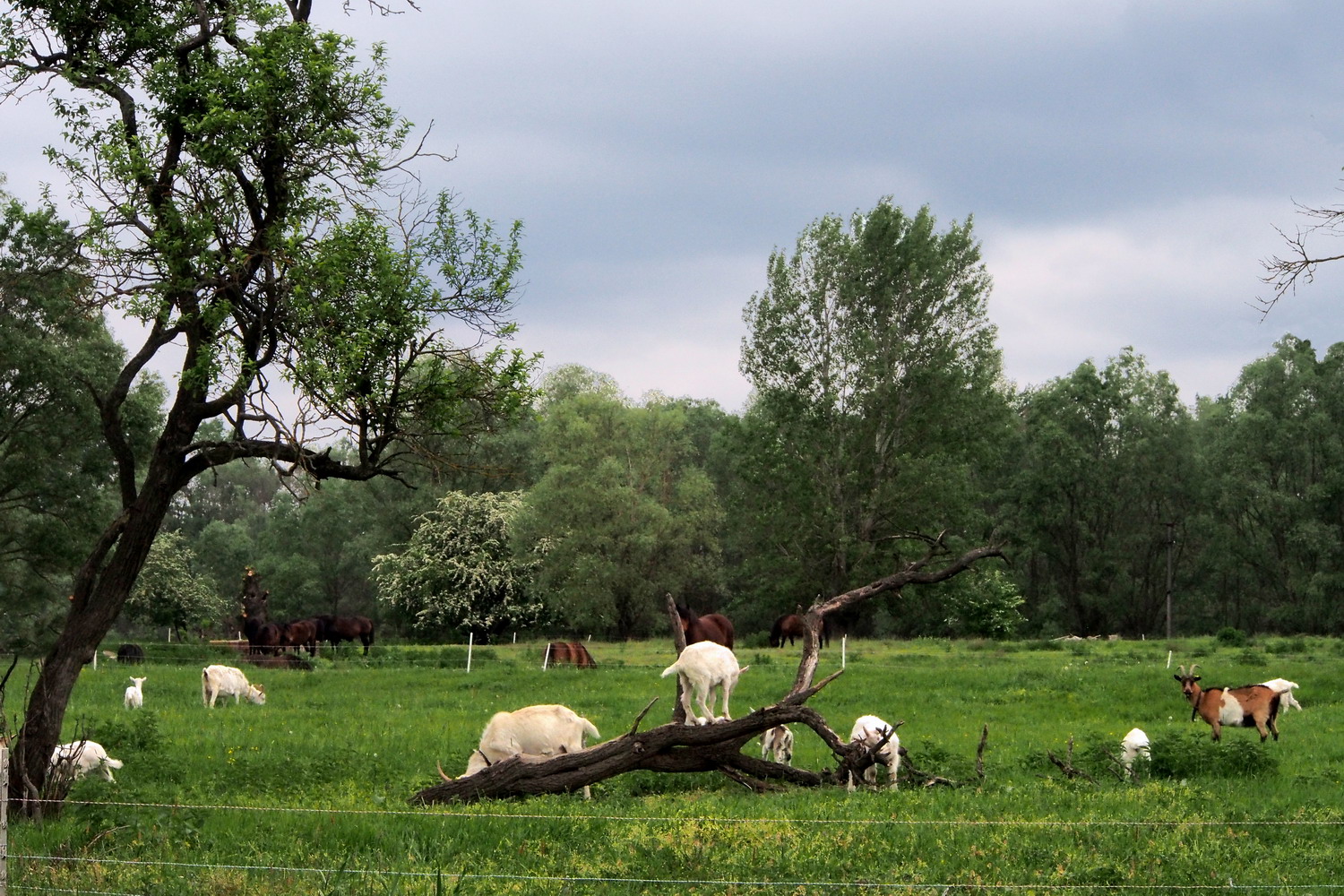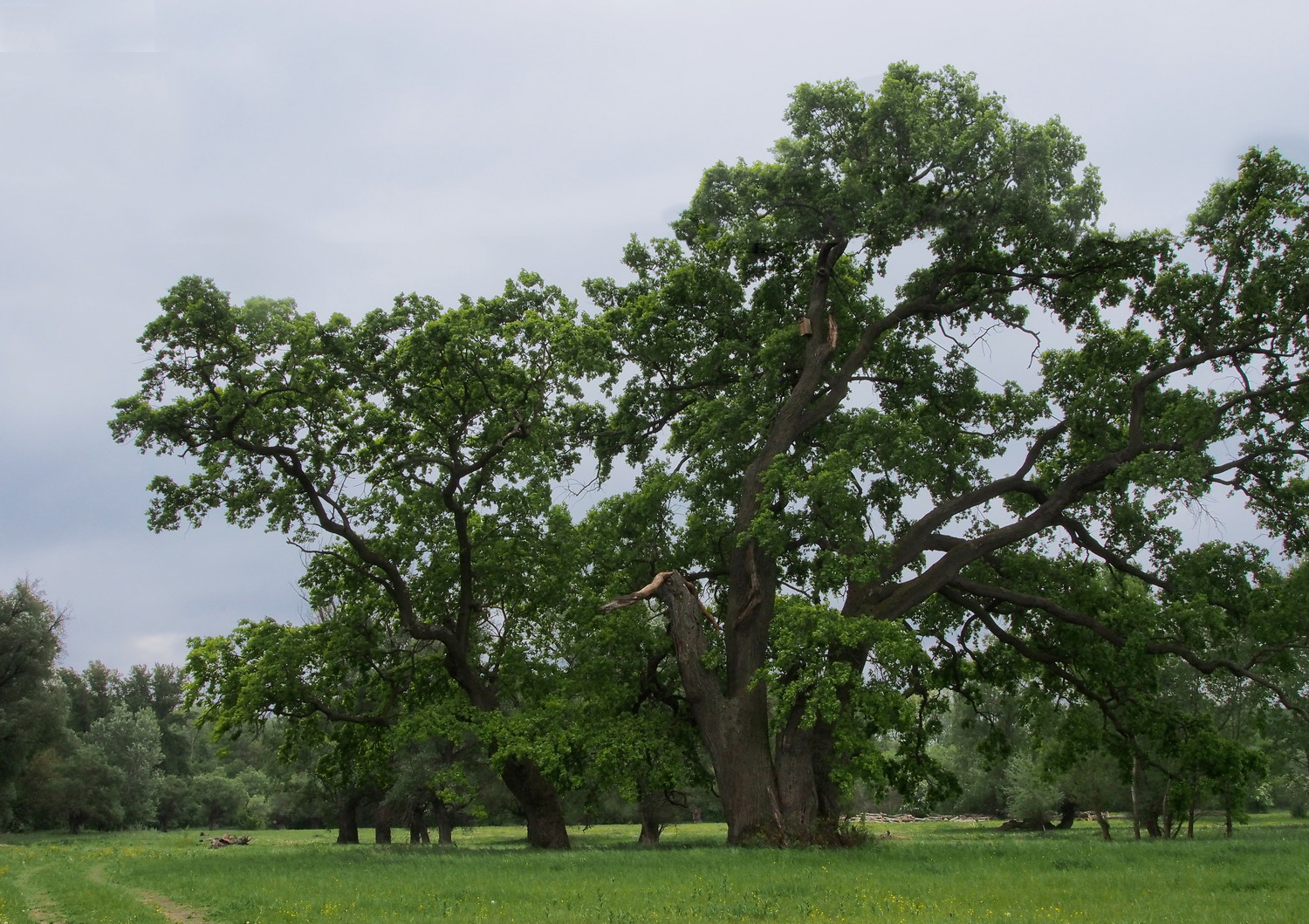|
Couple of days later I meet Andrea again on the biggest island of Slovakia. It has an area if 300 ha and got its name after the Hungarian commander from 10th century, Lehel or Lél.
Veľký Lél belongs to the village Zlatná na Ostrove (something like “Golden on Island”) and the earliest reference (1094) mentions the village under the name Locus Aureus. There is a reason that gold is part of both names - Andrea tells me that it was common to wash it here. And even today, if you are lucky enough, you could spot that unique glitter somewhere in the sand… Gold in the Danube, gold washers on the Danube? Now that was a surprise: after two international cycling trips along the river and countless trips along its Serbian part, that aspect somehow never came to my mind. As I mentioned (and will probably mention it again), this trip is something completely different...

Approaching Veľký Lél
For its wildwood forest preserved in rarely seen condition, the island was declared as nature reserve in 1974. But when BROZ came to Veľký Lél 13 years ago, the main problem was the dying local side arm.
There was one native cause for this: the Gabčikovo Sub-basin is the deepest part of the Danube Basin and the river has been forming an inner delta from Vienna to Budapest for centuries now – it is going wider and makes more branches or offshoots, while some disappear. But the main reason was that this area was under the influence of the huge Gabčikovo dam. When it was built, the dam came in a package with large dams along the riverbanks and with highly increased water management activities. The power plant as an enormous consumer that needs all water directed into the main channel and that turned former flooded areas into a more or less dry land.

An invitation to cyclists riding a gravel road on the dam while following the EuroVelo 6 route. (Except green fields and forest on the flooded side, there is nothing else for kilometers
before and after this little oasis.)

I'm guarding the household here!

My accommodation in Veľký Lél: mobile rustic romantics.
Or a rustic romantic mobility. Or a mobile rusticness that was romantic too :)

Above all that, some 20 years ago a concrete dam with a road was constructed to allow an easy access to the island. That was part of a planned construction of a water power plant in Nagymaros -which then was never built - but it slowed down the water flow through the branch, which gradually got clogged by sediment and trees. Similarly to the Sedlačkov Island, Veľký Lél was also almost completely connected with the mainland.
The island’s future started to look better when in 2004–2005 it became a part of the Special Protected Area “Dunajské luhy” (“luhy” - flat plains) and was included in the European network of protected areas Natura 2000.
Then in 2014-2015, BROZ cleaned the side arm through another LIFE project, removed embankments and concrete barriers. The last to remove was the concrete dam with road and it was replaced by a bridge. In addition to cleaning the side arm, this was the second most expensive thing in the project.

All these measures restored proper water flow, enabled fish to reach its spawning zones on the island and improved feeding and nesting conditions for water birds. Successful cooperation with the State water management company made it possible to determine the exact minimal amount of water flow that is needed for an unobstructed navigation of ships in the main flow of the river - that was the most important input in the whole process.
But the island itself has its own life-giving artery that was also in bad condition. There is a narrow channel that takes the water from the side arm and brings it into the middle of Veľký Lél. It was built by the locals in the last centuries, but interestingly with an opposite purpose than it has today: it was draining water from the pastures after regular Danube floods that occurred 2–3 times a year. Nowadays floods occur once a year or even once in three years, and in summers with little rainfall this is not enough to ensure grazing, existence of habitats and survival of animals depending on them.
That’s why BROZ started the reconstruction in 2018 and the channel has been restored in the length of 690 m. Its sluice gate now enables migration of fish and other aquatic animals.
And the island finally came into full life. Today it represents a unique mosaic of forest, wetland and grass habitats. Riparian forests with ash, elm oak, willows and poplars cover almost half of it. Its meadows are maintained by horses (20), sheep (50), cows (60-70) and goats (50) from BROZ eco-farm. Since 2009, with the help of these animals they managed to remove non-autochthone herb and tree species.

The landscape of the island is perfectly rounded by mighty, solitary oaks
in the middle of two huge meadows.There are five levels of nature protection in Slovakia, the first being weakest and fifth the strongest. All levels allow visitors to enter freely but levels 3-5 reduce moving around to designated paths only. Veľký Lél is under 2nd level of protection, meaning that
construction works are not allowed here. And there are zones with stronger protection
- for example the trees on the edge of this meadow are under 5th level of protection.
“So you can see here in one place all the main activities of BROZ that we mentioned the other day”, says Andrea,. “Water measures/restauration, grazing and planting.”

And as an interesting twist to planting, we can add - pruning. When so-called „pollard willows“ are left unpruned their branches become too heavy and the trees break (above). After being neglected that way for many years, they are now restored and cared again: regular pruning of their branches in several-year intervals creates characteristic “hollow willows“. Below their stylish haircut, their bark and decaying hollows are home for beetles and birds (below).


This box is a gift for this beauty below - Commoon Hoppoe (Upupa epops Hoppoe, Eurasian Hoppoe). The bird is nesting on the ground because it feeds on larvae from the feces of livestock.
The box is there for a while, but still no signs of a possible new tenant.

(Photo: Wikipedia)
Local people who didn’t pay much attention to the island in the past are now attracted by its new makeup. They come to participate in “horse days” and to socialize. (It is also worth mentioning that new working places were opened on the farm and in the new, modern campsite, both situated on the mainland close to the entrance of the island.)
Equestrian clubs have their summer camps here. There are camps for children too: this year there were six of them during summer holidays. They were fully booked already in May – a proof of a high interest.
The Slovakian branch of computer technology company DELL hold their team building activities here. They also have a “DELL planet” program and as a part of that program send employees here who spend a lot of time sitting in front of monitors. They help in the farm and in other activities while getting a chance to be released from the sedentary lifestyle at least for a short time.

The island even has a beautiful little beach

Entrance to the eko-farm


“In 2006 we actually leased and purchased most of the island, and we also own the farm. This was done for the purpose of nature conservation and allows us to efficiently apply measures for the improvement of different habitats on the island. We can control things and be sure that in the future, with the rise of the island popularity, there will be no weekend houses or that some other weird infrastructure won’t pop-up here.”

And what can you say about your activities in the frame of the project DANUBEparksCONNECTED?
“The main activity for us is WP 5, the dry habitats. And within a successful cooperation with the NP Donau-Auen we send our flocks to graze their dyke. We have our own transport vehicle to facilitate that.
Then we are active in the WP 6, forest work. As already mentioned, through that package we planted 43,000 seedlings of native tree species.
During the project I visited so far Ingolstadt, Wachau, Donau-Auen National Park, Fertö-Hansag, Duna-Ipoly, Kopački rit, Persina and Rusenski lom. And I will visit ”Serbia forests” soon .
As an organization, through DANUBEparksCONNECTED we learned that there is a lot of difference between countries in approach, paperwork, position of NGO’s in state. Colleagues in Germany and Austria are straight mainstream while we… we kind of meander here.”
What would be main reasons to be satisfied with your work as an organization? For example you have - let me google „BROZ“, you have 119 awards and decorations from 60 countries around the world, including French Legion of Honour and National Order of Merit, the British Order of the Bath, the Soviet Order of Lenin, the Japanese Order of the Chrysanthemum, the Cross of Merit of Federal Republic of Germany, Decoration of Honour for Services to the Republic of Austria, the Order of Merit of Italy, etc?
“We restored 70 km of side arms at different places and planted 200.000 trees so far. State authorities respect us. (Ok. their image of us as a successful organization is sometimes counterproductive - they don’t understand why we need another LIFE project.)"

Тhe ground squirrel breeding zone on the farm :)
And to all these important things I would add something small that made me smile when I took a look at - finally founded – BROZ web site: they promote an action called “Adopt a goat guard”. And they explain: “By symbolically adopting a goat, you will help us to restore the precious habitats of pastures and meadows as well as to restore the cultural phenomenon of grazing to our ambience”.
Well dear Andrea, is there anything else you would like to add at the end?
„Read the book ’Secret life of trees’ by Peter Woehleben. It tells about forests as social networks and how trees feel, communicate, help each other, live like human families. A true gem and sort of mind changing material.

|
